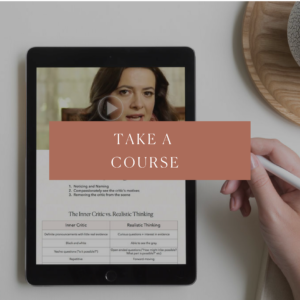Many people misunderstand the concept of being present and assume that it means never planning for the future or learning from the past.
Being in the present, they assume, is for people content to just hang out in there, smelling the roses, drinking martinis, and living moment to moment.
Of course, this is not true. Planning for and envisioning the future is critical to a fulfilling life. Reflecting on the past is essential as well, and both can be done from a place of presence.
In fact, to plan well for the future, or to reflect on the past in a truly helpful way, we need presence.
Here are two tales of planning for the future, one with presence, one without.
Let’s imagine that Mark is sitting down to have a conversation with his wife Susan, about their long-term future. Topics to discuss include their financial savings plan, priorities for discretionary time over the next five years, and whether they will move to a tropical location after their kids leave home.
Here’s what this conversation looks like from a place of non-presence: Mark and Susan show up carrying a set of assumptions about each other’s hopes and preferences around these plans — based on previous conversations. Its assumed neither has changed much in their thinking since the last time they spoke. Both Mark and Susan carry with them some still smarting wounds and resentments from those discussions.
In addition, in between this conversation and they last one, they have each been spending a lot of time watching their own mental movies about how they future might play out. In these fantasies, their minds take over —carrying Mark and Susan on mental trips. For Susan, these fantasies usually involve worries about isolation and distance from family if they move, as well as a host of anxieties about saving enough for their retirement. Mark there day dreams about how perfect it would be to start a small retail business in a new tropical location.
Both of them review the same movies repeatedly and revisit the same dilemma, while washing the dishes, spacing out at work, or whenever else those thoughts crop up.
Despite all that time spent deep in thought, neither has made much progress on their worries and unanswered questions. Neither has taken time—when refreshed, emotionally grounded, and undistracted, present–to look openly at the questions at hand. They mainly watch their mental movies in a rather half-conscious, distracted state.
When Mark and Susan show up for the conversation, these movies are with them. As they begin to speak, their bodies are sending all kinds of cues about what ideas and what ways of communicating with each other feel good and feel bad, but neither of them is paying attention to those sensations. Neither has consciously brought spirit to the conversation, and so their full depth, compassion for one another, and soul power is not being utilized in the planning.
You can imagine how this conversation goes. Assumptions prevent each one from really hearing the other. They hold each other in the realities of the past, not the possibilities of the present. They react emotionally, without slowing down to really understand what is driving their reactions. They get stuck, and tension between them flares.
Here’s how that conversation might look from a place of deep presence:
Both Mark and Susan recognize that this moment — this opportunity to plan for and envision their future is like no other. They affirm that all kinds of new possibilities and yet undiscovered plans await in the present moment.
They bring their full awake attention to the task. They focus intently on it and leaving other topics — what happened today, what will be happening tomorrow – aside. They consciously let go of all the extraneous thoughts and concerns they want don’t want interfering with the discussion.
They ground themselves in their bodies, by focusing on their breath, touching one another or a significant object, or taking a moment to notice the natural world around them. They work to be aware of their bodies throughout the conversation — to gather critical information about how certain ideas and potential actions impact them at a visceral level.
They slow down and each tune into what is happening within them. They notice the thoughts and emotions with them in the moment, share how they are feeling about having this conversation, and discuss their hopes and fears about how it will go.
They both see this planning conversation not just as a means to get to the future, but as inherently valuable in itself. There is a heightened awareness that every step along the way to the future is a valuable part of the journey.
Each gives full attention to their partner — listening with curiosity and knowing that their partner may show up in this moment in an entirely way they have in the past.
You can imagine how this conversation goes. They enjoy it. They are reminded of what they appreciate about one another. Its rich and full of discovery. They can brainstorm all kinds of ideas with low stakes. Creative solutions they had never thought of before flow easily. When one of them gets “triggered” they can sense it inside and work with it, so that it doesn’t derail the converation. They hear and can respond to one another, moment by moment.
Pick something happening in your life today, and try to apply one or more of these qualities of being present.
Love,
Tara



